I recently posted about the rookery that we visited near the Georgia coast and the relationship between the nesting birds and the alligators. In this post and the next one, I want to introduce the birds that nest in the rookery. I will first describe the Great Egrets(Ardea alba) with a few photographs. The Wood Storks (Mycteria americana) will be featured in the next post.
Great Egrets are quite large birds, nearly as large as Great Blue Herons (Ardea alba). When we visited the rookery, the egrets were in full mating plumage.
This photograph and the two which follow show the long plumes trailing from their backs. These plumes are called “aigrettes” (French for an egret species native in France or for the plumes themselves), and they nearly caused the extinction of Great Egrets. The plumes were once in demand as ornamentation for ladies’s hats. Some authorities estimate that more than 95% of the Great Egrets in the U.S. were killed for their plumes in the late 19th and early 20th century. Luckily, laws against plume-hunting were finally enacted around 1910 and Great Egret populations were able to recover.
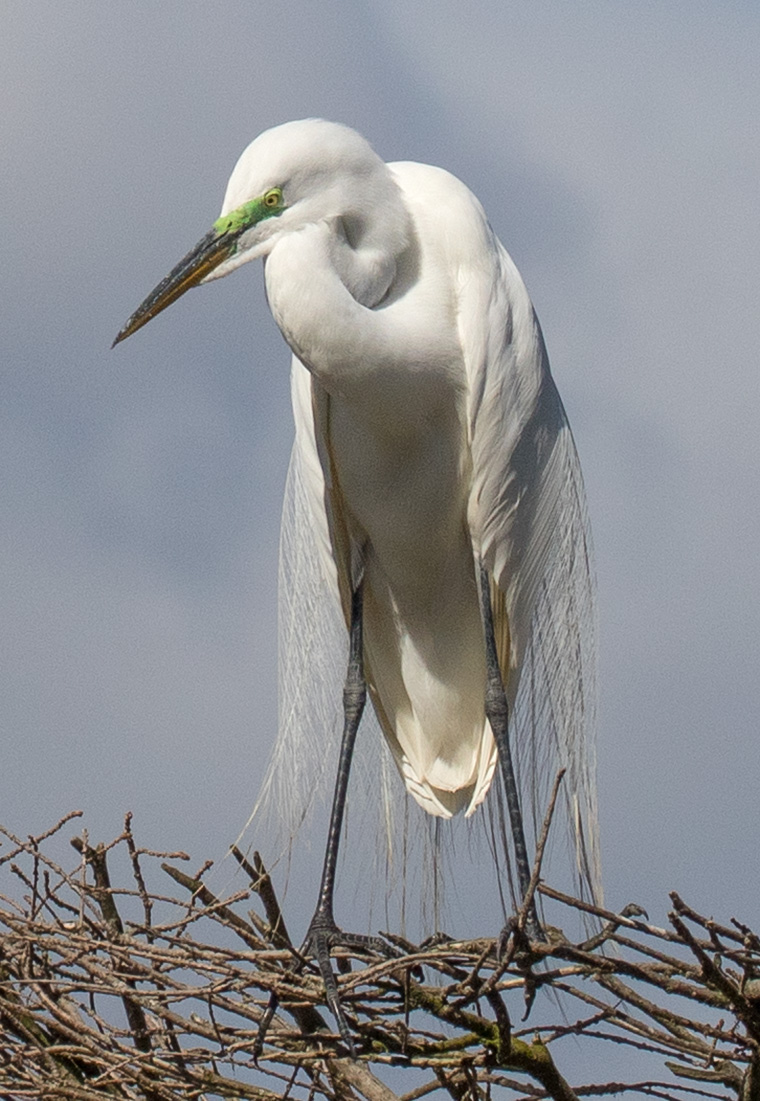
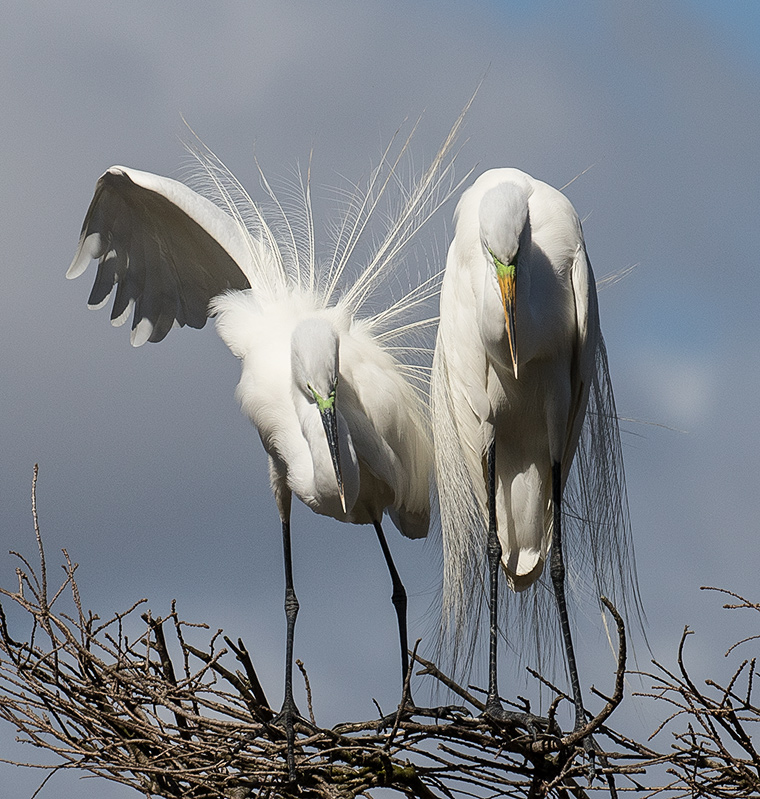 Great Egret’s most common prey are small fish, but they will eat frogs, snakes, salamanders as well as a large variety of aquatic invertebrates and insects if the opportunity presents itself. Their hunting technique is to wade slowly along searching for prey or to stand still and wait for some desired item to come their way.
Great Egret’s most common prey are small fish, but they will eat frogs, snakes, salamanders as well as a large variety of aquatic invertebrates and insects if the opportunity presents itself. Their hunting technique is to wade slowly along searching for prey or to stand still and wait for some desired item to come their way.
The other major change that occurs during breeding in the Great Egret is the bright green coloration taken on by bare skin between the base of the bill and the eyes. This area is called the lore (plural lores) in bird field guides. The one shown here is irritated at another egret that set down near it.
There are no obvious differences between male and female Great Egrets. However, I believe that all the ones that were present when we visited were males. The males ordinarily arrive at rookeries a few days before the females. All the Great Egrets that we saw were just sitting around and occasionally quarreling when another bird landed too closely. We saw no courting or nest-building activity.
Discover more from A Naturalist's Journal
Subscribe to get the latest posts to your email.

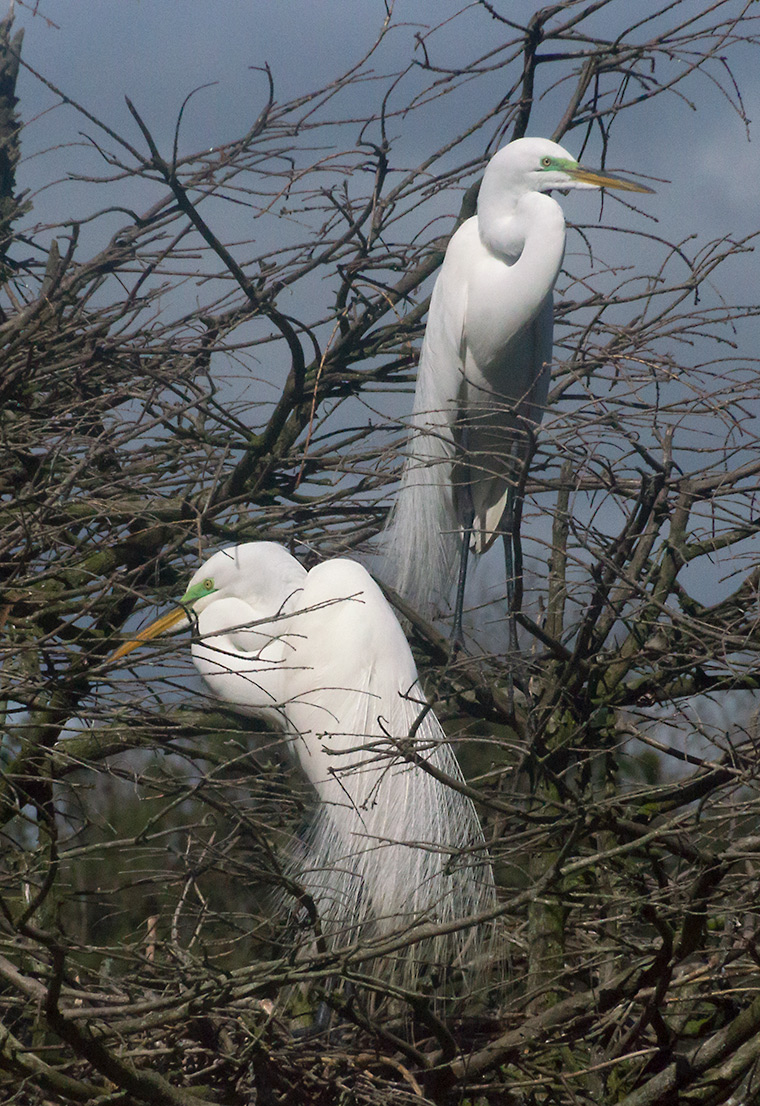
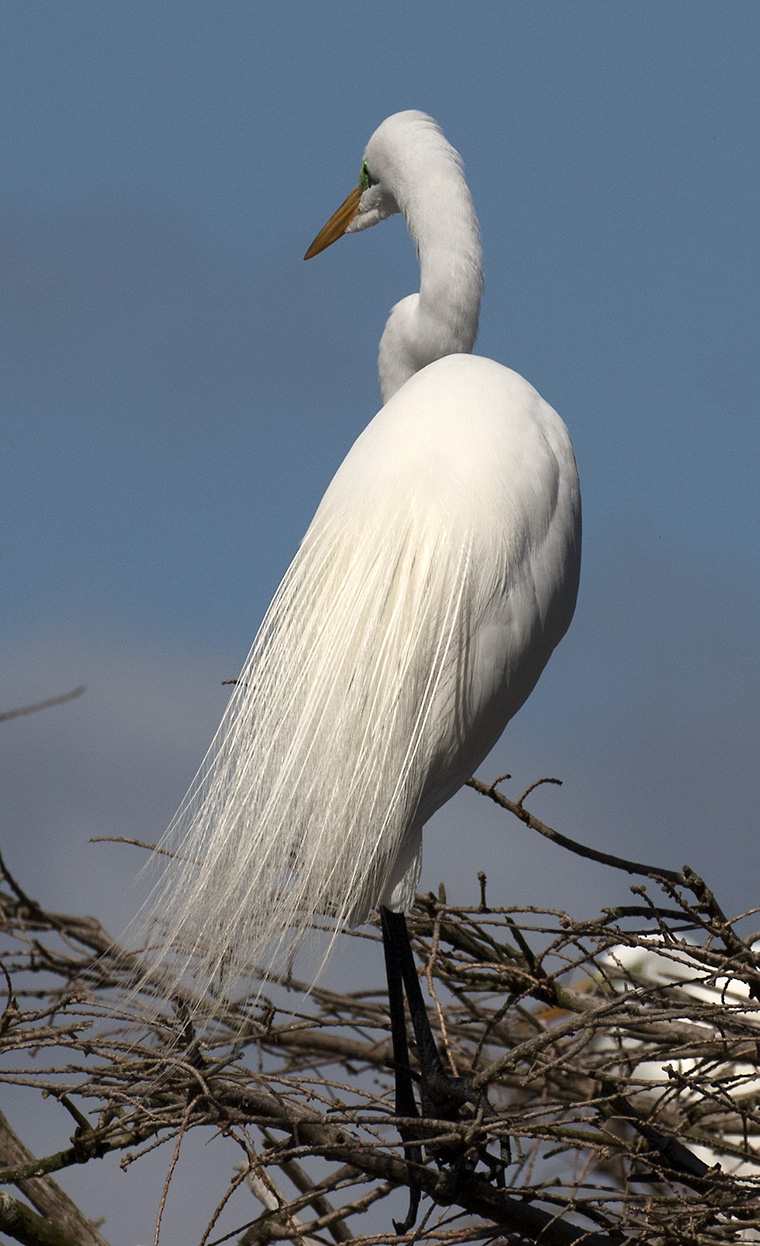
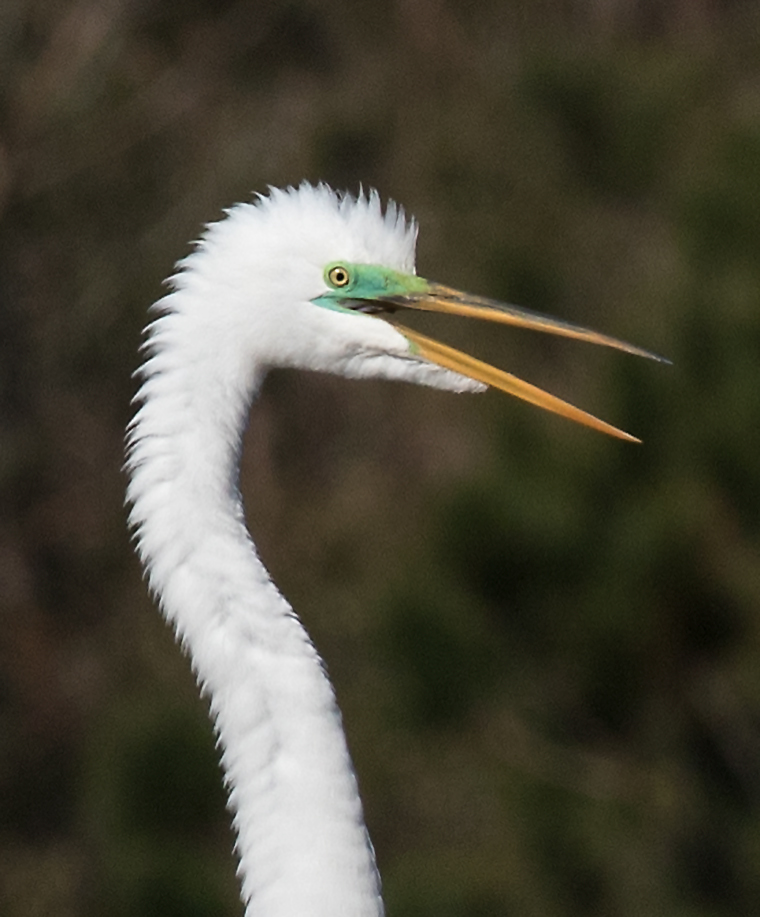
Interesting
Interesting
Thanks again for the beautiful pictures and explanation. I want to ask you what bird has the call “I need you, I need you”? Have been hearing this bird for several years and can’t get any answers on the Internet. The call is very distinct. Thanks. Please email me with the answer if you don’t mind.
Thanks Gary!